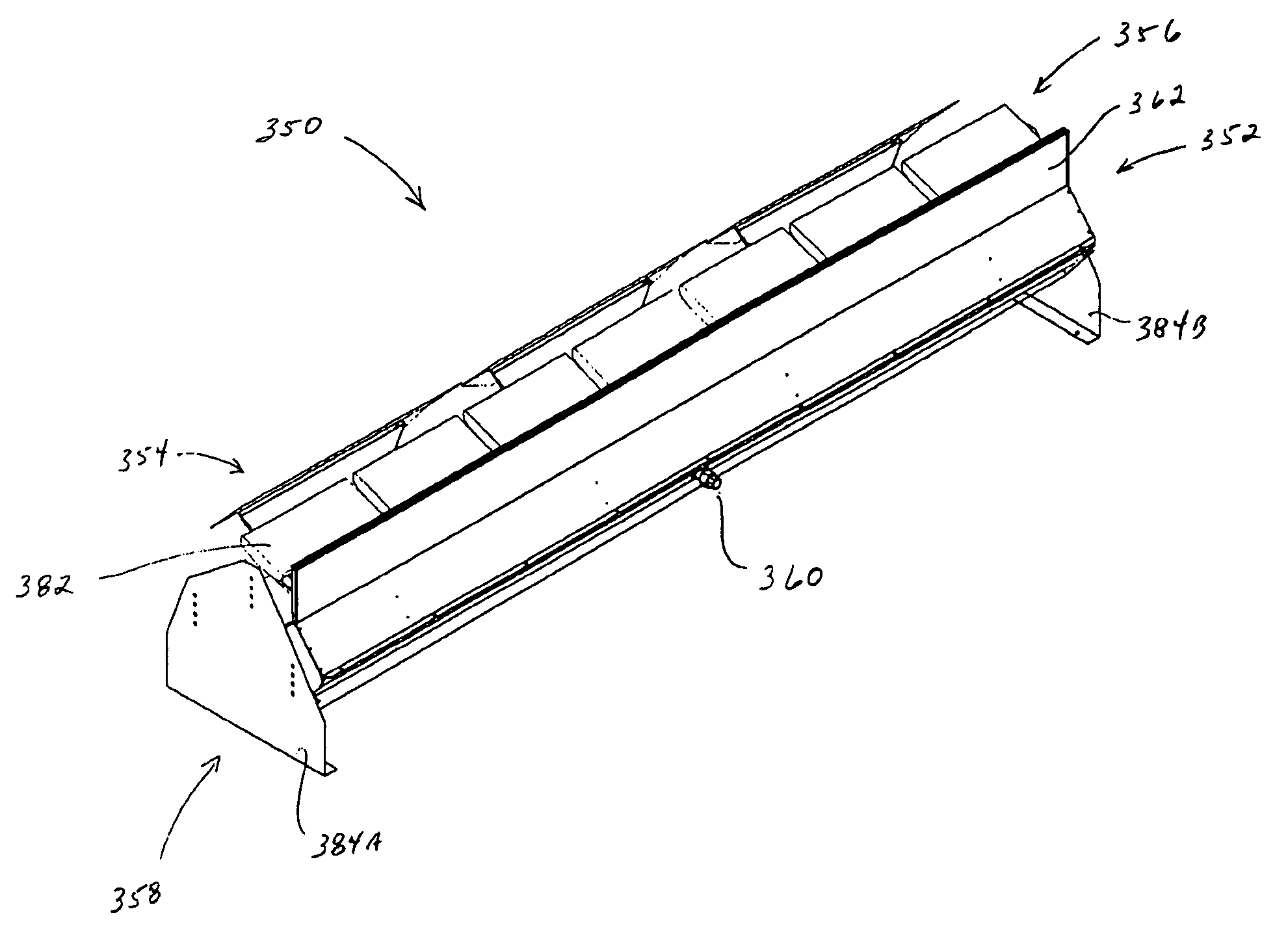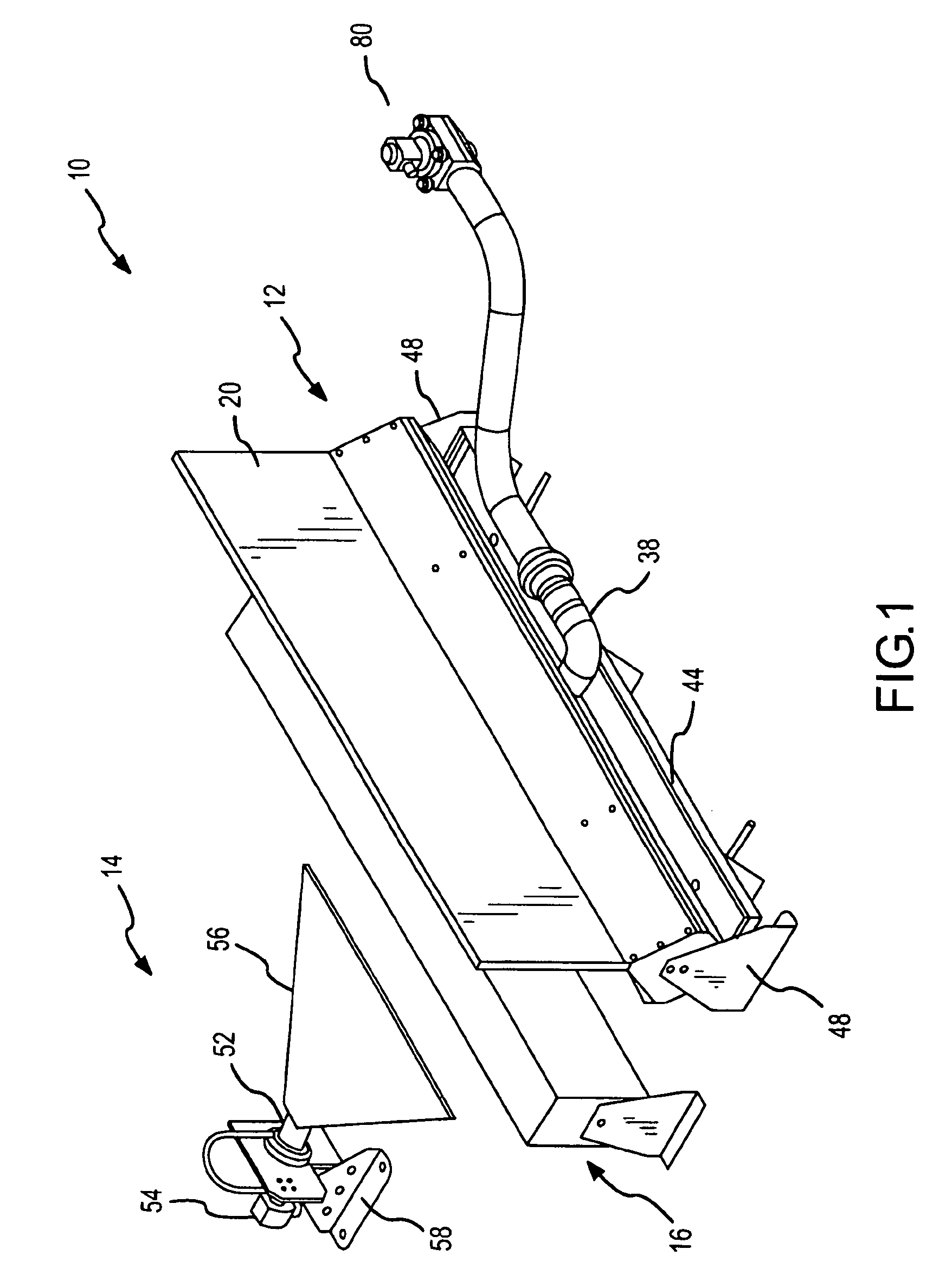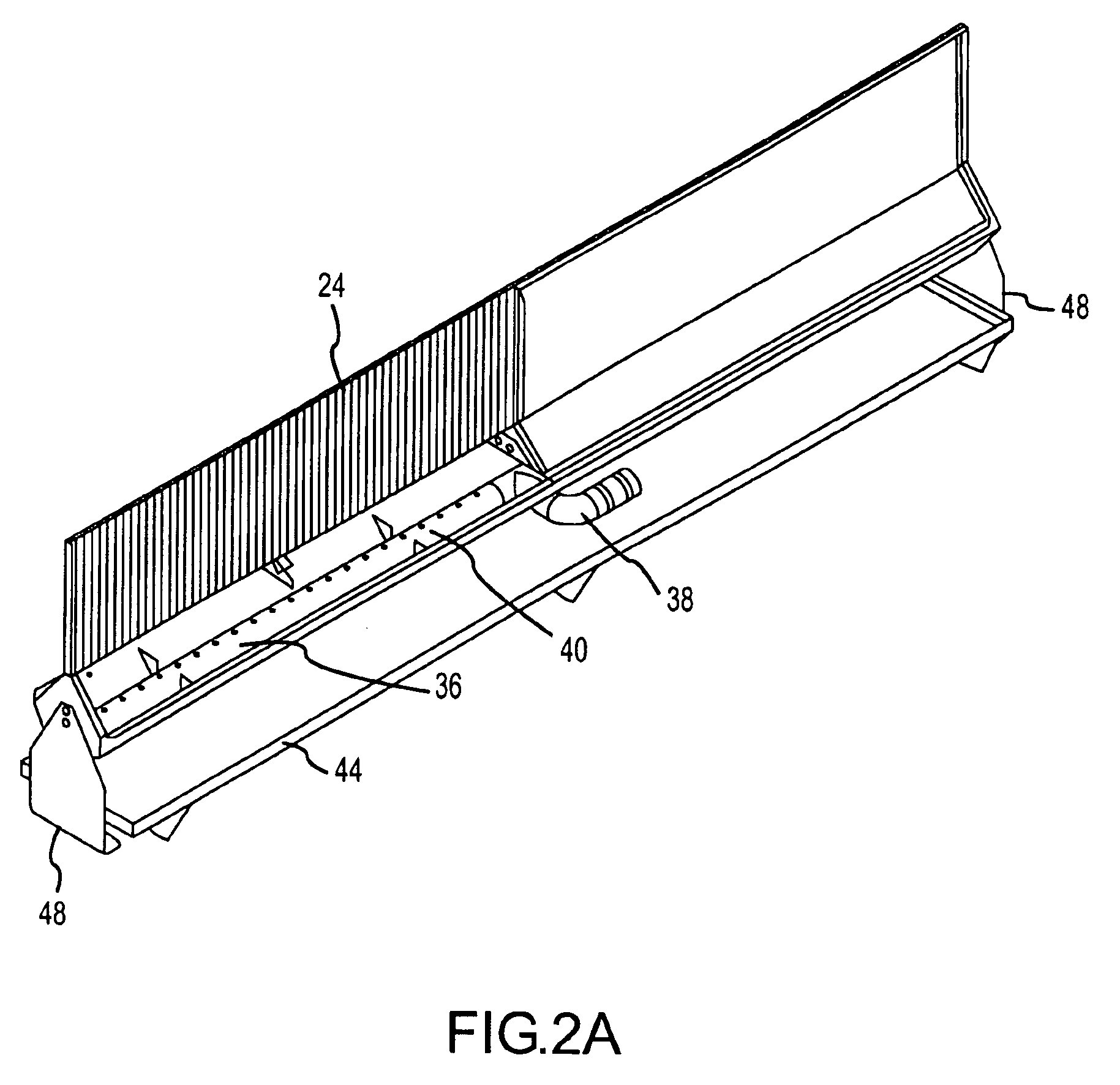Apparatus for producing a fire special effect
a special effect and apparatus technology, applied in the field of special effect devices, can solve the problems of complicating the design of the console, preventing the achievement of uniform or desired steam density over the entire length of the console,
- Summary
- Abstract
- Description
- Claims
- Application Information
AI Technical Summary
Benefits of technology
Problems solved by technology
Method used
Image
Examples
second embodiment
[0098]With reference to FIG. 14, a special effect device, hereinafter referred to as device 250, for producing a simulated flame or fire effect using a cloud of steam and that is particularly useful in an application in which a target viewer is typically able to inspect the device from relatively close range, the application in this case being a sconce. The device 250 is comprised of a steam console 252, an air modulator 254, and a lighting system 256. The device 250 is further comprised of a cover 258 that prevents a target viewer from seeing the steam console 252, air modulator 254, and lighting system 256 that are used to produce the simulated flame or fire effect. The fans associated with the air modulator 254 and the lights associated with the lighting system 256 are, like the comparable elements in device 200, operatively attached to the housing of the steam console 252 by support structures. Further comprising the device 250 is a mounting panel 260 that allows the device 250 ...
third embodiment
[0100]With reference to FIG. 15, a special effect device, hereinafter referred to as device 280, for producing a simulated flame or fire effect using a cloud of steam and that is particularly useful in an application in which a target viewer is typically able to inspect the device from relatively close range and from 360 degrees, the application in this case being a torchiere. The device 280 is comprised of a steam console 282, an air modulator 284, and a lighting system 286. The device 280 is further comprised of a cover 288 that prevents a target viewer from seeing the steam console 282, air modulator 284, and lighting system 286 that are used to produce the simulated flame or fire effect. The exterior of the cover 288 may be treated to produce a theme effect. For example, the exterior of the cover 288 may be treated so as to appear to be a brass or copper bowl to the target viewer. In the illustrated embodiment, the dimensions of the steam console 282 are such that the fans assoc...
fourth embodiment
[0102]With reference to FIG. 16, a special effect device, hereinafter referred to as device 300, for producing a simulated flame or fire effect using a cloud of steam and that is particularly useful in an application in which a target viewer is typically able to inspect the device from relatively close range, the application in this case being a medieval torch. The device 300 is comprised of a steam console 302, an air modulator 304, and a lighting system 306. The device 300 is further comprised of a cover 308 that prevents a target viewer from seeing the steam console 282, air modulator 284, and lighting system 286 that are used to produce the simulated flame or fire effect. The cover 308 is comprised of a first cover portion 310 that is designed to resemble the wick portion of the torch and a second cover portion 312 that is designed to resemble the wooden handle portion of the torch. In the illustrated embodiment, the dimensions of the steam console 302 are such that the fans ass...
PUM
 Login to View More
Login to View More Abstract
Description
Claims
Application Information
 Login to View More
Login to View More - R&D
- Intellectual Property
- Life Sciences
- Materials
- Tech Scout
- Unparalleled Data Quality
- Higher Quality Content
- 60% Fewer Hallucinations
Browse by: Latest US Patents, China's latest patents, Technical Efficacy Thesaurus, Application Domain, Technology Topic, Popular Technical Reports.
© 2025 PatSnap. All rights reserved.Legal|Privacy policy|Modern Slavery Act Transparency Statement|Sitemap|About US| Contact US: help@patsnap.com



